BMW i4 vs Ford Mustang Mach-E – Which one offers the better deal?
Everyday use, family trips or long-distance drives – here’s where the differences show.
Discover whether BMW i4 or Ford Mustang Mach-E fits your lifestyle better.
Costs and Efficiency:
Looking at overall running costs, both models reveal some interesting differences in everyday economy.
Ford Mustang Mach-E has a minimal advantage in terms of price – it starts at 48400 £, while the BMW i4 costs 49400 £. That’s a price difference of around 943 £.
In terms of energy consumption, the advantage goes to the BMW i4: with 14.70 kWh per 100 km, it’s noticeable more efficient than the Ford Mustang Mach-E with 17.70 kWh. That’s a difference of about 3 kWh.
As for range, the BMW i4 performs minimal better – achieving up to 613 km, about 13 km more than the Ford Mustang Mach-E.
Engine and Performance:
Power, torque and acceleration are the classic benchmarks for car enthusiasts – and here, some clear differences start to show.
When it comes to engine power, the BMW i4 has a slightly edge – offering 601 HP compared to 487 HP. That’s roughly 114 HP more horsepower.
In acceleration from 0 to 100 km/h, the BMW i4 is minimal quicker – completing the sprint in 3.70 s, while the Ford Mustang Mach-E takes 3.80 s. That’s about 0.10 s faster.
In terms of top speed, the BMW i4 performs somewhat better – reaching 225 km/h, while the Ford Mustang Mach-E tops out at 200 km/h. The difference is around 25 km/h.
There’s also a difference in torque: Ford Mustang Mach-E pulls somewhat stronger with 950 Nm compared to 795 Nm. That’s about 155 Nm difference.
Space and Everyday Use:
Beyond pure performance, interior space and usability matter most in daily life. This is where you see which car is more practical and versatile.
Both vehicles offer seating for 5 people.
In curb weight, BMW i4 is minimal lighter – 2070 kg compared to 2161 kg. The difference is around 91 kg.
In terms of boot space, the Ford Mustang Mach-E offers minimal more room – 519 L compared to 470 L. That’s a difference of about 49 L.
In maximum load capacity, the Ford Mustang Mach-E performs barely noticeable better – up to 1420 L, which is about 130 L more than the BMW i4.
When it comes to payload, BMW i4 minimal takes the win – 480 kg compared to 450 kg. That’s a difference of about 30 kg.
Who comes out on top?
Overall, the BMW i4 shows itself to be wins by a narrow margin and secures the title of DriveDuel Champion.
It convinces with the more balanced overall package and proves to be the more versatile choice for everyday use.

BMW i4
BMW i4
The BMW i4 beautifully merges the dynamism of a saloon with the efficiency of an electric vehicle, offering a truly exhilarating driving experience. Its design seamlessly blends elegance and athleticism, highlighting BMW's dedication to both aesthetics and performance. Inside, the i4 boasts a high-tech cockpit that harmonises luxury with intuitive technology, allowing drivers to stay connected while on the move.
details @ press.bmwgroup.com
@ press.bmwgroup.com
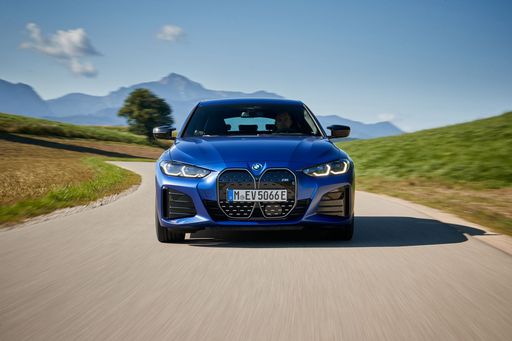 @ press.bmwgroup.com
@ press.bmwgroup.com
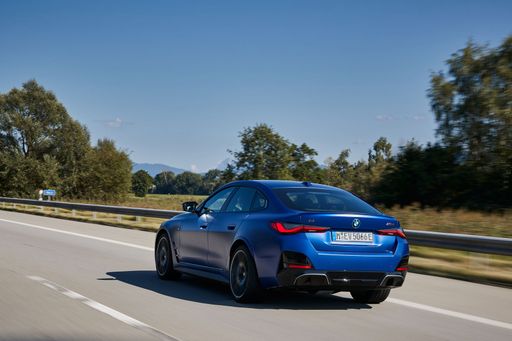 @ press.bmwgroup.com
@ press.bmwgroup.com
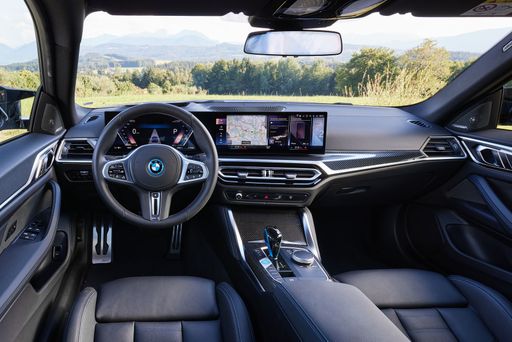 @ press.bmwgroup.com
@ press.bmwgroup.com
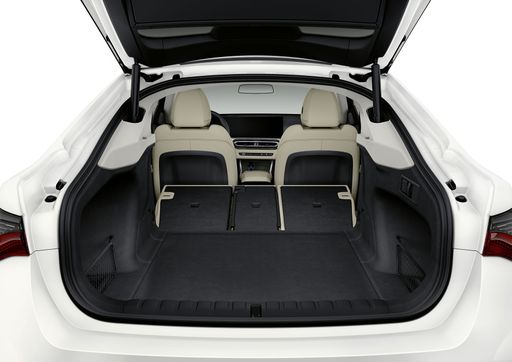 @ press.bmwgroup.com
@ press.bmwgroup.com
Ford Mustang Mach-E
The Ford Mustang Mach-E marks a new chapter in the legacy of the iconic American brand, combining classic muscle car aesthetics with modern electric vehicle technology. Its sleek design captures the spirit of innovation while offering a spacious and tech-savvy interior for enhanced driving comfort. The Mach-E promises an exhilarating driving experience, packed with cutting-edge features that set a new standard for electric SUVs.
details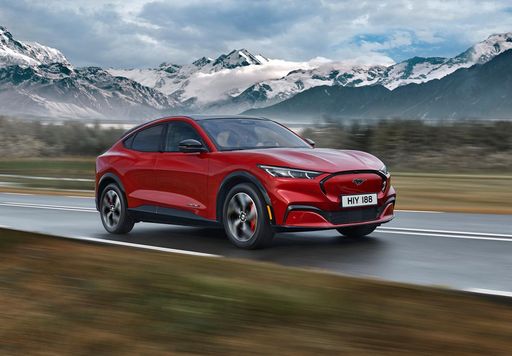 @ mustang.fordpresskits.com
@ mustang.fordpresskits.com
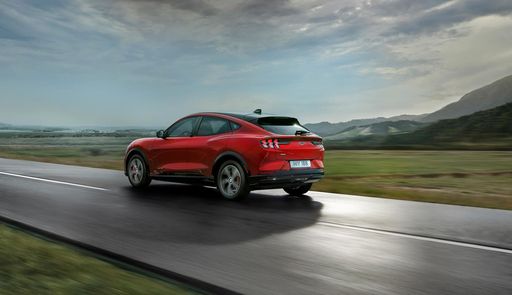 @ mustang.fordpresskits.com
@ mustang.fordpresskits.com
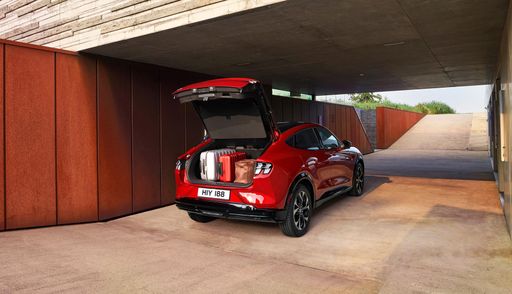 @ mustang.fordpresskits.com
@ mustang.fordpresskits.com
 @ mustang.fordpresskits.com
@ mustang.fordpresskits.com
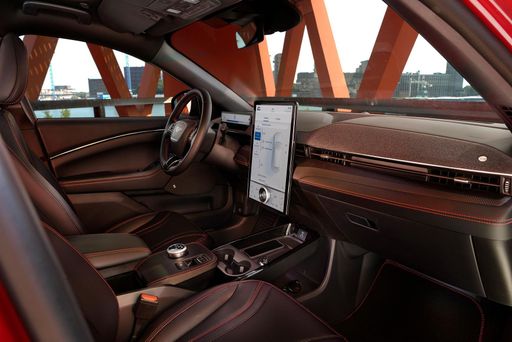 @ mustang.fordpresskits.com
@ mustang.fordpresskits.com

|

|
|
|
|
Costs and Consumption |
|
|---|---|
|
Price
49400 - 62500 £
|
Price
48400 - 66900 £
|
|
Consumption L/100km
-
|
Consumption L/100km
-
|
|
Consumption kWh/100km
14.7 - 16.7 kWh
|
Consumption kWh/100km
17.7 - 21 kWh
|
|
Electric Range
514 - 613 km
|
Electric Range
470 - 600 km
|
|
Battery Capacity
67.1 - 81.3 kWh
|
Battery Capacity
73 - 91 kWh
|
|
co2
0 g/km
|
co2
0 g/km
|
|
Fuel tank capacity
-
|
Fuel tank capacity
-
|
Dimensions and Body |
|
|---|---|
|
Body Type
Hatchback
|
Body Type
SUV
|
|
Seats
5
|
Seats
5
|
|
Doors
5
|
Doors
5
|
|
Curb weight
2070 - 2285 kg
|
Curb weight
2161 - 2351 kg
|
|
Trunk capacity
470 L
|
Trunk capacity
519 L
|
|
Length
4783 mm
|
Length
4713 - 4743 mm
|
|
Width
1852 mm
|
Width
1881 mm
|
|
Height
1448 mm
|
Height
1613 - 1624 mm
|
|
Max trunk capacity
1290 L
|
Max trunk capacity
1345 - 1420 L
|
|
Payload
445 - 480 kg
|
Payload
368 - 450 kg
|
Engine and Performance |
|
|---|---|
|
Engine Type
Electric
|
Engine Type
Electric
|
|
Transmission
Automatic
|
Transmission
Automatic
|
|
Transmission Detail
Reduction Gearbox
|
Transmission Detail
Reduction Gearbox
|
|
Drive Type
Rear-Wheel Drive, All-Wheel Drive
|
Drive Type
Rear-Wheel Drive, All-Wheel Drive
|
|
Power HP
286 - 601 HP
|
Power HP
268 - 487 HP
|
|
Acceleration 0-100km/h
3.7 - 6 s
|
Acceleration 0-100km/h
3.8 - 6.2 s
|
|
Max Speed
190 - 225 km/h
|
Max Speed
180 - 200 km/h
|
|
Torque
400 - 795 Nm
|
Torque
525 - 950 Nm
|
|
Number of Cylinders
-
|
Number of Cylinders
-
|
|
Power kW
210 - 442 kW
|
Power kW
197 - 358 kW
|
|
Engine capacity
-
|
Engine capacity
-
|
General |
|
|---|---|
|
Model Year
2025
|
Model Year
2025
|
|
CO2 Efficiency Class
A
|
CO2 Efficiency Class
A
|
|
Brand
BMW
|
Brand
Ford
|
What drivetrain options does the BMW i4 have?
The BMW i4 is available as Rear-Wheel Drive or All-Wheel Drive.
The prices and data displayed are estimates based on German list prices and may vary by country. This information is not legally binding.
